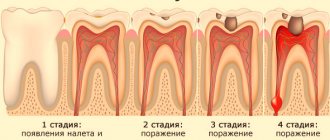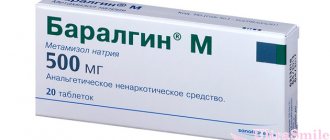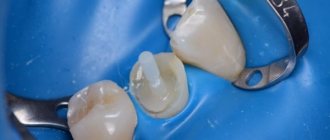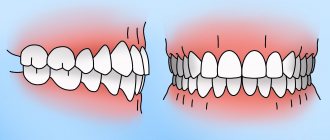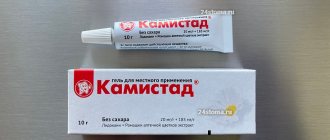Content:
- Forms of release of antibacterial agents used in dentistry
- Contraindications to treatment of flux with antibiotics
- What undesirable effects are possible during the course of medication?
- When you can't do without antimicrobials
- Which antibiotic to choose
- Danger of overdose
- Why you can’t self-medicate
Antibiotics are drugs that exhibit pronounced antimicrobial properties.
They block the growth and spread of pathogenic microorganisms. Dentists prescribe drugs from this pharmacological group for inflammatory gum diseases, purulent processes, and during the recovery period after surgical interventions in the oral cavity. Antibiotics also help with flux. A patient with an inflamed tooth root should not independently select an antibacterial composition. It is important to consider:
- degree of spread of the pathological process;
- associated disorders;
- sensitivity of the pathogen to active antimicrobial compounds;
- speed of regenerative processes.
If you take the wrong antibiotic for flux, the disease will continue to progress. This will disrupt the intestinal microflora. Therefore, never self-medicate.
The use of antibiotic therapy during pregnancy and lactation
Most antimicrobial agents are prohibited for use by expectant mothers and during breastfeeding. When prescribing antibiotics to suppress the purulent-inflammatory process in the gums and periosteum, the doctor takes into account the benefits for the woman and the possible risk for the developing fetus.
With the active spread of infection, suppuration, development of sepsis, severe complications against the background of the pathological process, it is possible to take certain groups of antibacterial agents. The new generation of antibiotics is less toxic to the fetus.
Under strict medical supervision, in the minimum effective dose, the following is prescribed:
- Ornidazole;
- Metronidazole;
- Josamycin;
- Azithromycin;
- Clarithromycin;
- Clindamycin;
- Cefepime;
- Ceftaroline.
The list of approved drugs is indicated by the dentist. The best option is to additionally consult with a gynecologist managing the pregnancy.
Anti-tuberculosis antibiotics are allowed to be used by pregnant women in combination with other drugs according to a specific regimen for a long period.
Forms of release of antibacterial agents used in dentistry
Dentists use drugs in the form of:
- Ointments and gels. Designed for local treatment of affected gums. Qualitatively relieve inflammation and reduce pain symptoms. As a rule, ointment and gel formulations are applied two to four times a day. It is important to use the medication regularly and strictly according to the regimen selected by a specialist. Only then will it be possible to achieve positive dynamics.
- Tablets and capsules. The most popular types of antimicrobial agents intended for oral administration. The daily dosage is determined by the doctor. When deciding which antibiotics to prescribe, the doctor must take into account the patient’s health condition. It is unacceptable to include in therapy drugs that can aggravate the course of existing diseases of internal organs.
- Solutions for injection. Injections are given intravenously or intramuscularly. This is the most effective option for antibacterial therapy. It is used for complicated and advanced forms of dental disease.
Contraindications to treatment of flux with antibiotics
It is prohibited to use antimicrobial agents that are contraindicated for the patient. Pregnant and lactating women are prescribed medications in this group only if the benefits expected for the mother outweigh the possible risks to the fetus. For young children with weakened immune systems, they always try to eliminate inflammation of the oral tissues without antibiotics.
Before starting antibacterial therapy, it is recommended that you carefully read the information provided in the instructions. Side effects, contraindications, and maximum daily dosages are indicated there. This data is very important. It is unacceptable to ignore them. If you have any questions regarding drug correction, you should consult your dentist.
What happens if flux is not treated?
Many patients, when symptoms of periostitis appear, hope that everything will “resolve” on its own, as people say. This is an erroneous and dangerous opinion, following which can have dire consequences. This situation can have a particularly serious impact on the child’s health, because the protective immunity at an early age is not well developed. If left untreated, the infection remains in the body, causing the emergence of new diseases, some of which can result in sepsis and death. What is most likely to happen? We list them according to the severity of the problem.
What undesirable effects are possible during the course of medication?
Side effects depend on the active compound of the particular drug and the individual characteristics of the patient’s body. Common complications caused by long-term antibiotic therapy include :
- Disturbances in the gastrointestinal tract, dysbacteriosis. The conditions are manifested by nausea, loss of appetite, diarrhea, abdominal pain, and flatulence.
- Decreased performance, muscle weakness.
- Dizziness.
- Allergic reactions. Usually these are skin rashes and itching. Swelling also often develops.
If the antibiotic is poorly tolerated, a repeated consultation with the dentist is indicated. It is possible that the doctor will replace the medication with a safer analogue.
When you can't do without antimicrobials
Dentists prescribe antimicrobial agents if:
- inflammation is caused by streptococcal or staphylococcal infection;
- soft tissues in different parts of the oral cavity are infected;
- purulent complications should be urgently prevented or eliminated;
- inflammation progresses despite treatment;
- The patient came to the dental clinic with advanced disease.
Since there is not always time to identify the causative agent of the disease, doctors usually select broad-spectrum antibacterial drugs. They quickly cope with negative symptoms.
Antibiotics for tooth root inflammation
For toothache caused by inflammation of the tooth root, doctors also prescribe fluoroquinolones (as for gumboil). In addition, for inflammatory pathologies of the tooth root, antibiotics of the penicillin and tetracycline series are also used. Let's take a closer look at them.
Penicillins
These are the first antibiotics that were discovered by Alexander Fleming in 1928. The main mechanism of action of penicillins is bactericidal. These drugs disrupt the synthesis of peptidoglycan, a component of the bacterial cell wall. This leads to the death of the bacterium.
Currently, different types of penicillin antibiotics are used in dental practice. The most common are amoxicillin and ampicillin.
Tetracyclines
Another class of antibiotics that was discovered a long time ago - back in the 40s of the last century. Tetracyclines act against a wide range of bacteria, both gram-negative and gram-positive microorganisms. The mechanism of action of tetracyclines is inhibition of protein synthesis in bacterial cells. Microorganisms stop synthesizing vital proteins, which is why they die.
Which antibiotic to choose
It is impossible to name one medication that would suit everyone. Only a doctor can determine the drug that is effective for a particular patient. To do this, he conducts a survey, examines the oral cavity and performs some diagnostic manipulations.
Among the antimicrobials most often used in dentistry, it is worth highlighting:
- Ciprofloxacin. Broad-spectrum composition. Belongs to the group of second generation fluoroquinolones. Effectively destroys Aggregatibacter actinomycetemcomitans - a gram-negative facultative anaerobic bacterium that causes periodontitis and periodontal disease. It is noteworthy that the medicine practically does not change the microflora of the oral cavity. Therefore, dentists classify it as safe.
- Metronidazole. It is used in the relief of pathologies caused by protozoa, oral bacteria and Trichomonas. Helps with damage to tooth roots, purulent processes, phlegmon, periostitis, abscess, alveolitis and many other diseases of the mouth.
- Doxycycline. Prescribed by specialists at the dental center if severe inflammation of soft tissues, gingivitis, granuloma, or damaged tooth roots are diagnosed.
- Tetracycline. Allows you to cope with the destruction of the periosteum and periodontitis. It has a unique ability to accumulate in the gingival fluid of periodontal pockets, due to which it quickly destroys pathogenic microorganisms.
- Azithromycin. Used in the treatment of inflamed periosteum in patients allergic to beta-lactam compounds. Drink once a day for three days. Moreover, its therapeutic effect persists for several days after the end of the course.
- Amoxiclav. Its active compound is amoxicillin supplemented with clavulanic acid. It is in such a “bundle” that the connection manifests itself best. If you use it in the fight against gumboil in the form of monotherapy, you are unlikely to be cured.
- Lincomycin. It has a pronounced bacteriostatic effect - quickly stops the proliferation of harmful bacteria, which is very important for periosteal pathologies. Destroys streptococci, staphylococci.
Most of the medications listed are available in pharmacies with a doctor's prescription. This once again proves that it is impossible to try to overcome toothache without ever visiting the dentist.
Symptoms
The main manifestations of gumboil disease are pain in the area of the causative tooth and the appearance of swelling in the soft tissues of the face. If at the beginning of the disease the swelling is mild, then as the process progresses the swelling increases and can spread to the eye area, scalp or neck. As the symptoms of flux increase, pus from under the periosteum can spread through the fatty spaces closer to the skin - this is manifested by the fact that the skin turns red, becomes dense and hot to the touch. Further, the skin in the center of the flux softens, becomes thinner, and a fistula with purulent discharge may appear. In this case, pain may decrease somewhat, which is associated with a decrease in pressure in the flux cavity during the formation of a fistula tract.
In addition to pain, symptoms such as limited mouth opening or inability to open the mouth, and pain when swallowing may occur. If the flux is located deeply, facial swelling may be mild or not expressed at all, and the main manifestations will be limitations in mouth opening, pain in the flux area and pain when swallowing.
Danger of overdose
Some patients believe that by using higher doses of medication they will be able to recover faster. This is wrong. In the case of any medications, it is important to adhere to the dosage and regularity of use.
If you deliberately increase the number of tablets consumed per day, an overdose will develop. This is an insidious condition that is harmful to health. In the case of incorrect antibiotic therapy, it manifests itself:
- vomiting, nausea;
- dizziness;
- loss of strength;
- discomfort in the abdomen, exacerbation of gastrointestinal diseases (if any);
- allergic rashes.
If an overdose occurs, you should immediately interrupt treatment and consult a doctor.
Other ways to treat dental and oral infections
The advisability of antibiotic therapy is determined solely by the doctor after diagnosis. In some cases, it is impossible to do without antibiotics, since it is not possible to get rid of the pathogenic infection in other ways.
In some cases, for inflammatory pathologies of the teeth and oral cavity, antiseptic drugs and anti-inflammatory drugs can be used. Folk remedies, for example, rinsing with herbal decoctions, have also proven themselves to be quite effective in the treatment and prevention of inflammatory diseases of the oral cavity. However, remember that traditional medicine cannot be used as the main type of treatment. They can be used as an additional measure to the main treatment.
Why you can’t self-medicate
Antimicrobial agents alone are not able to cure gumboil. Therefore, there is no point in carrying out antibacterial therapy at home and postponing a visit to the dental clinic. Drug treatment begins after cleansing and filling the roots, draining the inflammatory focus. Therefore, what precedes it:
- Opening the crown of a diseased tooth.
- Placement of a special composition into the carious cavity and installation of a temporary filling.
- Removing temporary filling material, cleaning and closing the canals.
- Fixation of a permanent filling.
At the same time, an incision is made in the gum in the area where the “bump” is located so that the pus comes out naturally.
Antibacterial agents are only one of the stages of complex therapy for inflammation of the periosteum of the jaw. It is often possible to do without them. To do this, you do not need to wait until the pain becomes unbearable and the gums become swollen. It is recommended to go to the dentist immediately - as soon as a purulent “bump” appears or a tooth begins to ache.
Types of flux
This pathology is characterized by several stages of its clinical development. At the first stage, minor pain appears. The second stage is characterized by swelling and redness of the gums in the area of infection.
During the third stage, pus appears, the temperature rises, and the cheek and gum area swell noticeably. At the fourth stage, a person feels a sharp throbbing pain, swelling intensifies, and an extensive inflammatory process may begin. The following types of flux exist:
- Ordinary.
The pathological process occurs without infiltration of the periosteum by pus;
- Fibrous.
With this type of periostitis, inflammation spreads to the periosteum tissue;
- Orthodogenic periostitis.
The disease manifests itself in the form of osteomyelitis, which is a serious complication requiring surgical tooth extraction;
- Albuminous flux.
Chronic pathology, which is characterized by a sluggish course, subfertile temperature and suppuration.
Only a dentist can determine the type of disease and prescribe proper treatment, but before visiting, it is necessary to stop the process.

